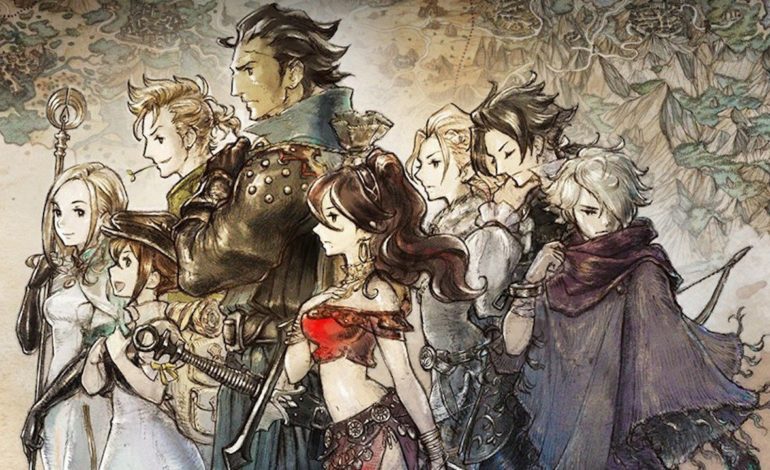

Japanese Role-Playing Games (JRPGs) is a genre unique to itself with its own set of rules that set it apart from other games in the RPG genre. Pioneer and most notable game franchise Final Fantasy has a few competitors to the title of best JRPG series, but the newest one to join the roster is Octopath Traveler.
Square Enix has a pedigree for making memorable JRPGs, and they have the right to be proud of this one. They capture an aesthetic similar to the style of old-school 16-bit RPGs similar to the golden days of Chrono Trigger and old Final Fantasy games. Octopath takes this art style and gives the game a 3D touch similar to that of the Paper Mario series with a 2D sprite running around the world, adventuring and exploring with literal depth to the world. To add to it, and enhance this style of art, there are various elements in lighting that make the game more fantasy and dream-like. With this shift back to an old-school style there are prominent elements to the classic form of the older JRPGs. Notably textboxes, turn-based strategy combat, and a lot more textboxes.
The game changes the style of how RPG storytelling goes. Rather than having one main protagonist, you will have a plethora to choose from where each of their different stories can potentially intertwine and have varying dynamics in the story. Each playable character has their on exposition story introduction, with a subsequent plot thread to follow along. Although each character may have their own stories and arcs, each character does belong to the shared world of intertwined stories. As the title suggests, there are eight playable characters, and each has their own unique intros and expositional stories to be told and unraveled throughout the course of the game. Each one has their own unique abilities than can be used in combat, and abilities that can be used in the overworld.
As the stories progress and the character-roster increases, the scale of difficulty will follow suit. Each new member added to the team increases encounter difficulty. The unique feel of each character is enhanced with their boss encounters and their personalities which tie into their typical class/archetype. Each skillset affects what players can do in the world and how they interact with it. Even more interesting is, for example, whether players can steal an item or buy it, which during a failed attempt will hinder the party’s reputation in the town.
Octopath Traveler wears the JRPG genre proudly, mixing in the styles of old Final Fantasy, and modern JRPG elements including the grind. Each character obtained will begin at one and has to be leveled and upgraded. Following the retro turn-based combat system, the game improves upon older versions of this style similar to Child of Light.
Players so seek out a familiar JRPG style with a modern twist, Octopath Traveler is now available for purchase on the Nintendo Switch.
Play games, take surveys and take advantage of special offers to help support mxdwn. Every dollar helps keep the content you love coming every single day.


